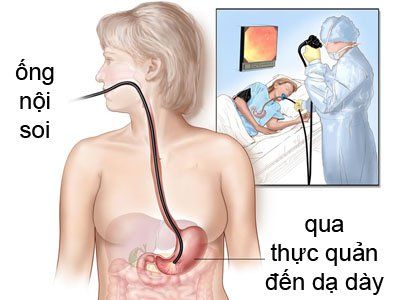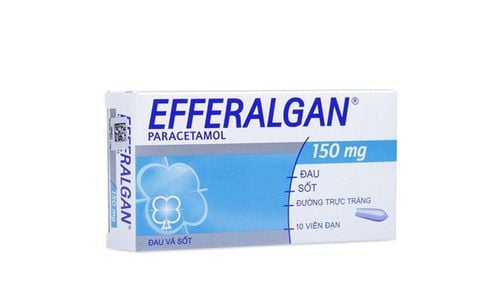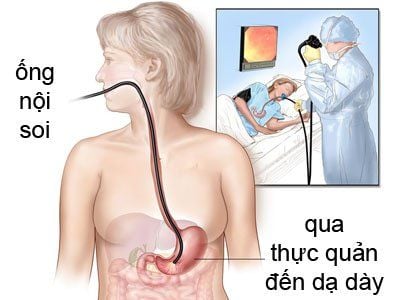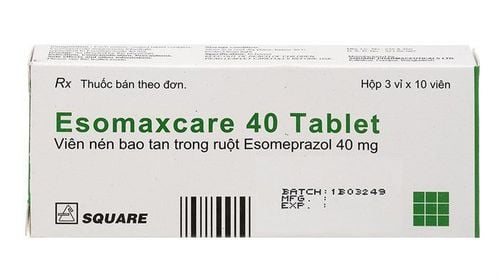This is an automatically translated article.
The article is professionally consulted by Master. Doctor II Phan Thi Minh Huong - Gastroenterologist - Department of Medical Examination & Internal Medicine, Vinmec Da Nang General HospitalThanks to the development of medicine, the interventions on the body parts are limited to the lowest level, especially the endoscopic gastrointestinal intervention array. This technique is now being widely applied to treat many diseases instead of requiring surgery in the past.
1. What is gastrointestinal interventional endoscopy?
Interventional gastrointestinal endoscopy is the next step behind diagnostic endoscopy. This means that after the patient is diagnosed with diseases through endoscopy on the gastrointestinal tract, if this disease indicates endoscopic therapeutic intervention, real doctors will perform the procedure. technique at this very moment.All interventions on visible lesions on the gastrointestinal tract surface are performed remotely through a flexible bronchoscope that enters the natural route (via the mouth or anus). This tube has a small diameter, just attaches a light source, a camera to record and directly project on the large screen outside. As a result, technicians can see clearly, helping to manipulate interventional instruments accurately on small lesions of only a few millimeters to large tumors several centimeters on the lining of the digestive system.
The whole process including diagnosis and treatment takes place smoothly in one stage, limiting excessive invasiveness on the body, reducing pain as well as shortening the hospital stay.

Nội soi can thiệp đường tiêu hóa giúp việc điều trị dễ dàng hơn
2. When is endoscopic interventional gastrointestinal tract needed?
Interventional gastrointestinal endoscopy is indicated for localized lesions visible on the surface of the gastrointestinal tract. The indications are:
Resection of single polyps, multiple polyps, submucosal tumors in the stomach, duodenum and colon Total mucosal resection for early cancer treatment Press biopsy on the mucosa Pick up gastrointestinal foreign bodies Endoscopic hemostasis procedures Esophageal varicose ligation Ligation of hemorrhoids with rubber bands
3. How is gastrointestinal interventional endoscopy performed?
The interventional gastrointestinal endoscopic procedure is essentially similar to the diagnostic gastrointestinal endoscopy procedure in general. That means that before entering the intervention room, every patient is thoroughly examined and routine tests are performed. This work not only focuses on the group of gastroenterologists, but also helps to assess the general health status as well as the ability to tolerate endoscopy. At the same time, only patients with suspicious symptoms or multiple risk factors, which have been identified by various non-invasive but unclear laboratory means, are indicated for endoscopy.To perform general procedures, patients and relatives are consulted and explained about the necessity of gastrointestinal endoscopy in diagnosis combined with disease treatment if indicated.
In addition, the procedure and possible risks are also carefully presented for the patient's understanding and acceptance. Then, pre-endoscopic preparations such as fasting or enema and monitoring facilities are arranged before the final endoscopy begins. In case the patient is too sensitive and stimulated, the doctor will add a local anesthetic or a pre-anesthetic to suit the situation.

Trao đổi với bác sĩ những vấn đề về tiêu hóa cũng như quy trình thực hiện trước khi nội soi đường tiêu hóa
Specifically, patients admitted to the hospital due to massive vomiting and bloody vomiting, endoscopic finding that the esophageal veins are dilated or bleeding ulcers on the gastric mucosa will be quickly inserted to stop bleeding. in situ by sclerotherapy, tying, clamping clips... to block bleeding nibs. If the patient comes in because of swallowing a foreign body, especially a young child, through the endoscope, the doctor will also look for the foreign body and insert the forceps to remove the foreign body, releasing the blockage. For suspected cases of peptic ulcer disease caused by Helicobacter Pylori, a mucosal sample will be taken and taken out, testing to evaluate the presence of this bacterium at the endoscopy room. .
For pathologies of the lower gastrointestinal tract (colon framework), the access route will be through the anal opening and this technique will generally be easier for the patient than the upper gastrointestinal tract. The pathologies that often intervene by endoscopic surgery are to remove polyps as well as suspected papillomas, and take a biopsy sample to observe under the microscope to determine the possibility of malignancy. Endoscopic intervention is also indicated in cases of lower gastrointestinal bleeding such as ulcerative colitis, hemorrhoidal internal hemorrhoid ligation...
4. What should be noted when endoscopic interventional gastrointestinal tract?
In order for the gastrointestinal interventional endoscopy to be successful, there are a few things to note before and after the procedure that need to be understood before proceeding.
Because this is an invasive procedure, all patients must have a general physical examination, especially cardiovascular and respiratory function assessment to ensure tolerance to endoscopy. At the same time, the endoscopy room also needs to be equipped with enough vital monitoring facilities as well as emergency - resuscitation facilities, doctors have been trained in these skills to respond promptly when incidents occur. .
For emergency interventional endoscopy such as to stop bleeding in the case of gastrointestinal bleeding or foreign body removal, the patient can be performed immediately without prior preparation. However, in programmed cases, any prior careful preparation of the patient will allow the endoscopic surgeon to explore more comprehensively and intervene more precisely.
After endoscopy, certain discomforts cannot be avoided; However, these quickly subside a few hours later, and the patient should be encouraged to eat and drink and resume normal activities. Because interventional endoscopy is an invasive procedure that requires sophistication in an extremely narrow space, it is impossible to avoid events such as perforation of the digestive tract, causing bleeding, damage to surrounding organs. around,...
Therefore, it is necessary to keep track of the patient for at least a few hours until one day after the intervention. In case the patient is very tired, has a lot of shortness of breath that does not subside, has intermittent abdominal pain, fever or vomiting, bloody stools... timely.

Nôn ói sau nội soi can thiệp tiêu hóa là triệu chứng bất thường, bạn nên báo lại với bác sĩ để được xử lý kịp thời
5. Why should endoscopic interventional gastrointestinal tract at Vinmec Da Nang?
Currently, endoscopic interventional gastrointestinal technique has been commonly performed at Vinmec Danang International General Hospital. In which, the outstanding is the interventional endoscopic technique - successful hemostasis injection on a series of cases and the accident rate is less than 5%, the interventional endoscopic technique - gastrointestinal polyp removal from more than 1cm or more. It also has a fairly high success rate of over 95%, and a complication rate of less than 5%.
Although the service cost is similar to that of local hospitals, coming to Vinmec Da Nang, patients are provided with world-class service quality with state-of-the-art equipment.
Representative is the endoscopic system EviqExera 3, CLV 190 with magnification function, currently the only one in the whole of Da Nang. Not only that, other supporting technical machines are also modernly equipped, accompanying tools, medical consumables are selected extremely strictly, must meet the best standards. In addition, the sanitation system, cleaning and disinfection procedures are then strictly followed, ensuring the safest sterility.
To create the success of the interventional gastrointestinal endoscopy, the decisive role also lies with the team of experienced endoscopists. These are doctors who have many years of experience in the practice of medical examination and treatment specializing in gastroenterology as well as performing endoscopy.
Specialist doctor II, Master Phan Thi Minh Huong : has over 30 years of experience in the field of Gastroenterology, continuously for many years achieved advanced labor, emulation soldier, Awarded the Certificate of Merit from the Minister of Healthcare, Certificate of Merit from the Prime Minister, Awarded the title of Excellent Doctor. Interventional gastrointestinal endoscopy is a medical achievement that is being applied very widely, treating many complex diseases in the esophagus - stomach - duodenum - colon. However, in order for the colonoscopy to be safe, the patient needs to have certain knowledge and prepare carefully before the procedure.
Please dial HOTLINE for more information or register for an appointment HERE. Download MyVinmec app to make appointments faster and to manage your bookings easily.













